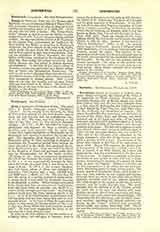

Dora, a titular see of Palaestina Prima. The name (Dor) in Semitic languages means “dwelling”, “abode”. On the coming of the Hebrews, the King of Dora or Dor entered into the confederation against Josue and was defeated with the confederates (Jos., xi, 2; xii, 23). The town was first allotted to the tribe of Aser (Jos., xvii, 11), then given to Manasses (Judges, i, 27; I Par., vii, 29), who failed to expel the inhabitants and imposed on them a tribute; the Israelites may have captured only the upper city (Nafat Dor), called Napheddor or Phenaeddor by the Septuagint, and regiones or provincia Dor by the Vulgate. The Egyptian King Rameses III set up a Phoenician colony at Dora; according to Stephan of Byzantium the Phoenicians settled there because the coast abounded in the shells that produced the famous Tyrian purple dye. Dora was united by David to the Kingdom of Israel and governed under Solomon by Benabinadab, one of the twelve prefects (III Kings, iv, 11). Later it underwent successively the rule of the Persians, the Greeks, and the Lagides. In 217 B.C. it was unsuccessfully besieged by Antiochus the Great; at a later date it was taken by the kings of Syria. In 139 B.C. the usurper Tryphon, who had taken refuge at Dora, was besieged by Antiochus (VII) Sidetes with a fleet, 120,000 foot, and 8000 horse (I Mach., xv, 13). The city then fell into the hands of a private individual called Zoilus, at whose death it was added by Alexander Jannaeus to his Kingdom of Judea. When Pompey conquered Syria, he granted Dora an autonomous constitution; from this time dates its peculiar era, 64-63 B.C., known chiefly through numerous coins. As Dora had suffered much from the Jews, Gabinius rebuilt it (56 B.C.). In 42 of the Christian Era its inhabitants were still disputing with the Jews, whom they seem to have specially hated. In the time of Pliny the town was in a state of utter decay; St. Jerome speaks of “the ruins of that city [Dora] which had been formerly so powerful”. He may have exaggerated its decay, or the city may have risen from its ruins.
As early as the fifth century it was the residence of a bishop, Sidus, and suffragan to Caesarea; there isrecord also of Barachius in 518, John in 536, Stephen, the friend of St. Sophronius, Patriarch of Jerusalem and the great opponent of Monothelism. In the Mid-dle Ages Dora was called Pirgul, a corruption of Greek, purgos, “tower”, according to Foucher of Chartres (Gesta Dei per Francos, ed. Bongars, 396); it was also known as Merla (Rey. Les colonies franques de Syrie, Paris, 1883, 422). There are records of five Latin bishops during the fourteenth and fifteenth centuries (Eubel, I, 235; II, 161). Another is mentioned in “Revue benedictine” (1904), p. 62. Its modern Arabic name is Tantourah. Dora is a village of about 1500 inhabitants, on the seashore between Caifa and
Caesarea, nearer the latter. The harbor is frequented by small boats; the old port, situated more to the north, was enclosed by two headlands lengthened by two piers. To the east are vast quarries and the ancient necropolis. The ruins of the ancient city cover a space about four-fifths of a mile long by one-third broad. Many Jewish colonists have recently settled in the vicinity.
S. VAILHE

